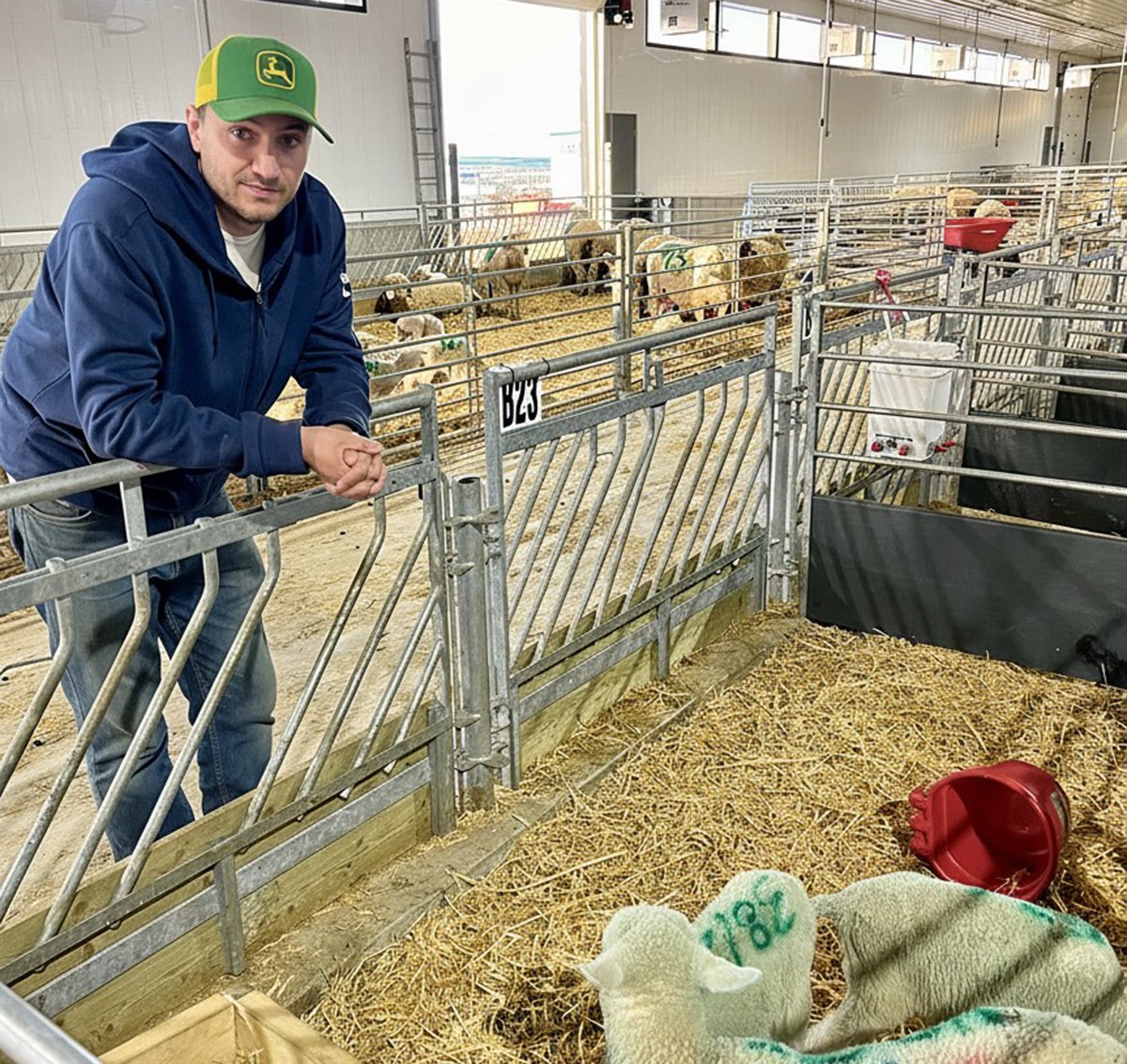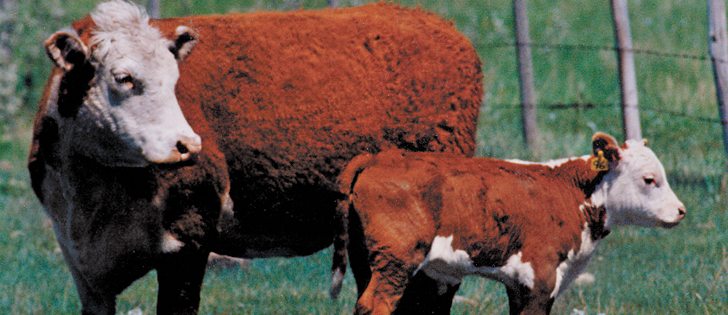Scours, septicemia, pneumonia, navel and joint infections, injuries, pinkeye and foot rot are all particularly dangerous
The first month is the riskiest time in a young calf’s life.
Scours is at the top of the disease list, says veterinarian Claire Windeyer of the University of Calgary’s faculty of veterinary medicine.
“Scours is the number one disease we think of when we are considering calf-hood health problems,” she said during a Beef Cattle Research Council webinar on disease management of young calves.
Other threats are septicemia, pneumonia, navel and joint infections, injuries, pinkeye and foot rot.
“We know these diseases interact,” she said.
Read Also

Solar, sheep provide valuable farm diversification
Eric Steeves says raising sheep on forages grown under solar panels provided economic stability and perhaps even saved his family’s fifth generation southern Alberta grain farm.
“If you’re at risk for one disease, you are at risk for others. Those calves that become sick early in life are often the ones who become repeat offenders and become sick with other things.”
Very sick calves can die, which affects herd profitability.
“For every percentage of your herd that you lose, the rest of the herd has to pick up the slack,” she said.
Five percent is considered a low to normal death rate. However, the survivors need to compensate, so calves need to be 25 to 40 pounds more at weaning to make up for those that died.
If 15 to 20 percent of calves are lost, the rest of the herd will have to weigh 100 to 200 lb. more at weaning to make up the losses.
“We want to prevent that mortality because it is really hard to pick up that slack,” she said.
Scours or neonatal calf diarrhea can be caused by bacteria, viruses or parasites. More than one disease agent can strike a vulnerable young animal at the same time. If scours infects a calf, the entire herd should be monitored because there is rarely only one sick animal.
“Usually that really sick calf is just the tip of the iceberg,” she said.
It is a good idea to know what caused the disease because different treatments are needed.
“Different bugs affect calves at different ages. If a calf is sick at less than five days, it is likely going to be an E. coli issue,” she said.
At three weeks or older it could be coccidiosis.
Scours can look serious, but calves often die of dehydration so they need fluids.
Calves that are mildly dehydrated and can still suckle need oral electrolytes. Not all commercial products are alike, so talk to a veterinarian about the best products.
Calves that cannot stand and do not have a good suckle reflex will need intravenous fluids. A veterinarian’s help may be needed.
Antibiotics don’t treat most types of scours because many are viral or parasitic rather than bacterial. Antibiotics may be used to treat secondary infections.
Supportive care for sick calves includes keeping them warm and dry as well as making sure they are getting energy if they are off their mothers.
Septicemia is an inflammatory response to bacteria or bacterial toxins circulating in the blood stream.
“It is an under-appreciated cause of death in calves,” Windeyer said.
Clinical signs include depression, fever, hypothermia and no appetite. The gum may be brick red, and the whites of the eyes have visible blood vessels. Pulses become weak, and extremities become cold.
“They get sick quite quickly,” she said.
“They go down hill before you really have a chance to clue in that something is going on.”
Prognosis is not good, and they often need aggressive therapy to survive. They could end up with joint infections, pneumonia or meningitis.
Septicemia occurs in calves younger than two weeks and often happens because the newborn did not get enough colostrum from the mother.
Navels may not have healed, and bacteria can enter the system. The calf may also have scours.
“We estimate about a third of our scouring calves do end up with bacteria in the blood, and some of those will become septicemic.”
Injecting antibiotics into the vein so that they enter the blood stream sooner can help. Keep the calves warm, dry and hydrated and make sure they get enough energy.
Viral or bacterial infections can also lead to pneumonia or bovine respiratory disease. Sick calves have an increased respiratory rate, fever, dullness, depression, eye and nose discharge or a rough hair coat.
Sporadic cases of pneumonia can happen in calves younger than 30 days and are probably caused by insufficient colostrum.
Another form is an outbreak of summer pneumonia that hits at 90 to 150 days of age.
Management of calves takes planning to make sure they receive adequate colostrum as well as a vaccination program.
Research at the University of Calgary monitored calves that were born without assistance to cows experiencing a difficult birth.
The suckling reflex at birth was also checked.
The research found the proportion of calves that failed to consume colostrum went up as calving ease decreased.
Producers can check the suckling reflex and test suckling strength by placing a finger in the calf’s mouth at 10 minutes after birth. Calves with a weak suckle reflex were 42 times more likely to fail to consume enough colostrum.
The researchers found that calves born unassisted had a 14 percent chance of failing to consume enough, while those that arrived after a difficult assist had a 64 percent greater difficulty in getting enough colostrum on their own within four hours of life.
Producers may have to consider milking out the cow, if it will co-operate, and bottle feeding the newborn calf if it fails to get enough colostrum.
“Colostrum is the best vaccination a calf can receive,” Windeyer said.
Every farm has a different vaccination program, depending on colostrum intake, the presence of disease, when calves are handled and marketing plans.
Vaccinate pregnant cows to give the calves a head start.
Intranasal vaccines have gained popularity in recent years. Maternal antibodies can interfere with the effectiveness of an injected vaccine, but the intranasal products may actually generate a better immune response in the calf.
Intranasal vaccines in Canada are only for the pathogens causing respiratory disease. They do not work for scours.
Windeyer said they may be provided during spring processing and at weaning. This can provide a good immune response to reduce clinical disease, death and virus shedding.
Contact barbara.duckworth@producer.com
















